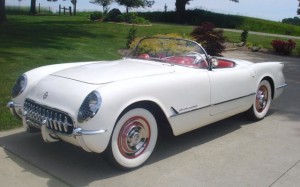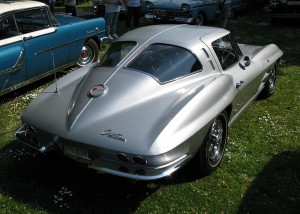 With the 2014 Corvette Stingray (C7) recently announced and filled with new features and technical upgrades – from an aluminum body to carbon fiber integration (at a sub-six figure price) – it’s a good time to look back at some of the technical and commercial advancements Chevrolet introduced to the domestic auto industry through the Corvette line. This isn’t a complete list, nor is it organized by any factors. It’s just a way to look back and thank America’s fastest production car for the innovation it’s brought to the race track and the driveway.
With the 2014 Corvette Stingray (C7) recently announced and filled with new features and technical upgrades – from an aluminum body to carbon fiber integration (at a sub-six figure price) – it’s a good time to look back at some of the technical and commercial advancements Chevrolet introduced to the domestic auto industry through the Corvette line. This isn’t a complete list, nor is it organized by any factors. It’s just a way to look back and thank America’s fastest production car for the innovation it’s brought to the race track and the driveway.
Factory Built Race Cars
It wasn’t the first time it happened (most firsts when it comes to speed and racing go to the European mega-manufacturers), but it was one of the firsts in the US. Prior to the C1 and C2 Corvette, there were not a lot of factory built race cars. In an era of cars with horsepower in the double digits, the 1963 Grand Sport managed to pack 550 horsepower under the hood. Chevrolet wouldn’t even make another race car stock for decades, and only the C6 ever surpassed the numbers put up by those early C2s.
Fuel Injection
The first official production car with fuel injection in a gas engine was the Mercedes-Benz 300SL. It was built two years before the Corvette C2 started using the GM-Rochester fuel injection system. That made it the one of the earliest cars with a mass produced engine to achieve the until then elusive ratio of 1 hp per cubic inch of engine size with a standard 290 horsepower.
The car was not among the fastest Corvettes of that generation, but for a stock Corvette (not a race car or special edition), it was a huge leap forward for the technology of the time.

Body Innovations and Styling
While the C3 and C4 certainly have some iconic presentations, they were not nearly as successful or innovative as the early models or more recent editions of the Corvette, in large part due to the rise of fuel economy standards and safety requirements for the American auto industry.
So in the 1990s with the release of the C5 and later with the C6, Chevrolet decided to go back to what had worked so well for them before – redesigning the look and feel of their signature speedster and innovating in body-design, weight and speed. The C5 had an all aluminum engine with a 6 speed manual and reintroduced the racing Corvette. The C6 went even further with the fastest Corvettes in decades, the classic exposed headlamps, and lightweight body design that has been enhanced even more to get more speed with less weight in the C7.
The Corvette has been an iconic part of the American auto industry since 1953 and will continue in full force with the new 2014 Stingray. From supercharged speedsters to racing dynasties, the Corvette is a classic in more ways than one. Let’s just hope Chevrolet continues to innovate by coming up with new ideas and design options.
Speak Your Mind